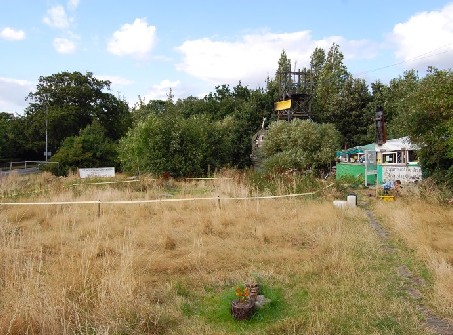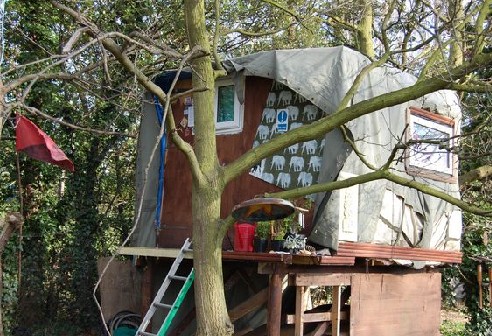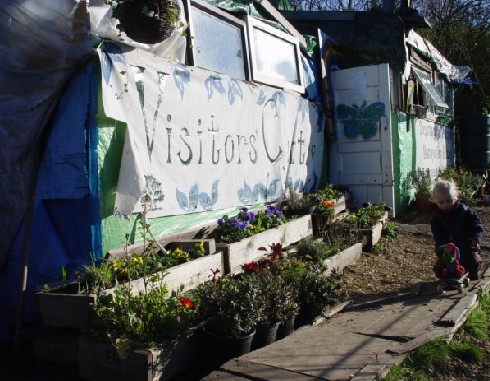About once a week, sometimes more often, sometimes less, I take the number 20 bus from the top of my road to the corner of a place special to thousands of people in the Essex town of Southend-On-Sea. After crossing the busy dual-carriageway, I pass through the gate to Priory Park and am immediately enveloped by a veil of quietness, as though someone detuned the traffic station on the radio and found a frequency that only contains people, birds, small mammals and the rustling of leaves. It takes about 5 minutes to walk from corner to corner, after which I exit the main park and negotiate another busy road. There are two gates in front of me: a larger one with a ramp behind it, and a smaller one over which I reach and unhook the bungee cord which is attached to one of dozens of steel security fences lining a long triangle of greenery.
I open the small gate, besides which is a sign that reads “Welcome to Camp Bling”. It’s like coming home — it feels like that every time I step through the gate and make my way towards the collection of rustic structures that make up the communal living areas of this road protest camp that has just celebrated its third year. Camp Bling has never actually been my home, but in the three years it has existed — effectively preventing the concreting over of a naturally diverse and historically unique piece of land affectionately known as “The Shrubbery” for the purposes of shaving a few seconds off a car journey — I have spent many happy hours talking to the various friends I have made on site, helping with the many tasks attached to maintaining a sustainable living space, and also just chilling out with a cup of tea, reading books and being somewhere other than civilization.
Of course life on a road protest site is no holiday: people come and go, sometimes in acrimonious circumstances having realised that communal living is not for them; bad weather damages structures that are built largely from leftover materials — packing cases, old doors, pallets, cast-off timber — and people on the other side of the council constructed fence throw abuse, rocks and Molotov cocktails, with the intention of causing injury or worse. Life on the camp is like being inside a cage of a zoo: except the captives are really the majority outside of the bars, living lives designed for them by a system that respects nothing but profit and consumption. Inside the fence exists an alternative to that life.
The road might not be built, but the threat is still there. Not only will the bulldozers destroy trees, grassland and a diverse web of life that can only be truly appreciated over time, but it will also wipe out evidence of a Saxon king (jokingly called the “King Of Bling” by an archeological television programme), a link to a past which we have all but forgotten, a past that didn’t heat up the planet and made only a tiny dent in the global ecology. That link is why the site is called Camp Bling.
A road protest site it may be, but it is also a fully-fledged community from which ideas flourish, and within which knowledge can be found. The Camp Bling website has just been launched as a platform for much wider concerns: global ecological destruction, peak oil, cultural sterilisation…an attempt to bring a wider audience into a place that up to now has been a local issue, with local visitors. The future will have to be about community; about understanding the needs and treasures of the local environment; about creating something that doesn’t respect global heirarchy nor the destructive ambitions of a brainwashing elite.
Camp Bling is a learning process, a process that can be repeated where you live, all the time taking a simple message to those who are prepared to listen: there is another way, and there is still time to take that path.


